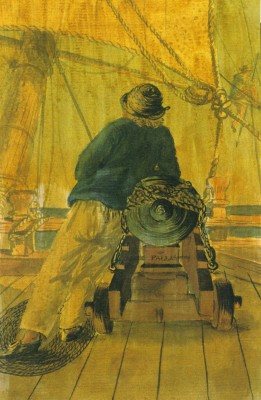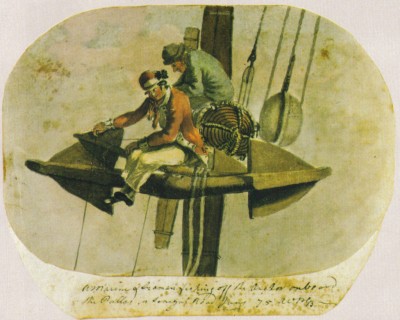A SEAMAN OF THE PALLAS LEANING ON A BOWCHASER
By Gabriel Bray, c.1776
(Highest resolution available 2046×3128)
Despite the ill fate of Admiral Byng, the Royal Navy had no problem recruiting new officers. A career of a naval officer meant glory and responsibility, it promised friendship and connections in the highest circles of the British society. This together with prospects of an adventurous life and a wealthy one after attracted many. Recruiting of sailors, however, was a much more serious problem. Every major navy experienced shortages of skilled and experienced seamen. Those numbers the Royal Navy managed to secure were quickly depleted by desertions and disease. Casualties inflicted by the enemy were insignificant compared to them. There were approximately 85,000 enlisted men by 1760, but the Royal Navy was still short on hands. The scale of the problem fluctuated between periods of war and peace, and at the outbreak of war with France in 1755 it was as severe as it had ever been before. The ships increased in size and number and more sailors were needed.
A MARINE AND A SAILOR OF THE PALLAS
By Gabriel Bray, c.1776
(Highest resolution available 1457×1168)
Different navies had different solutions to the problem. While the British used impressment, the French employed a more sophisticated system of conscription. Every seaman was registered and called into navy when required. The sailors loathed the imposition on their personal liberty and many ways to escape both systems were invented. Still the service in the Navy had its advantages. The merchantmen operated short-handed to increase profits, while naval service promised a share in prize money. Some who were sufficiently fortunate and gifted even had a chance to be promoted to the officer corps.

